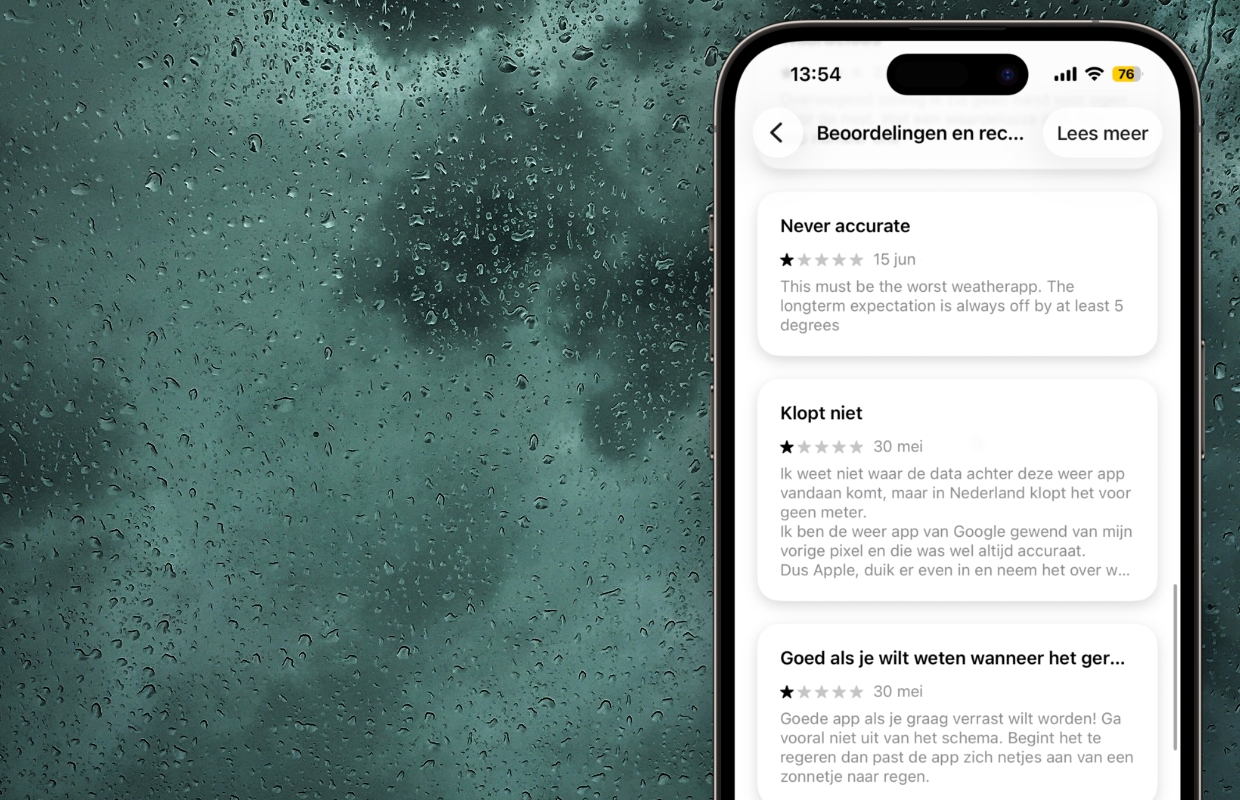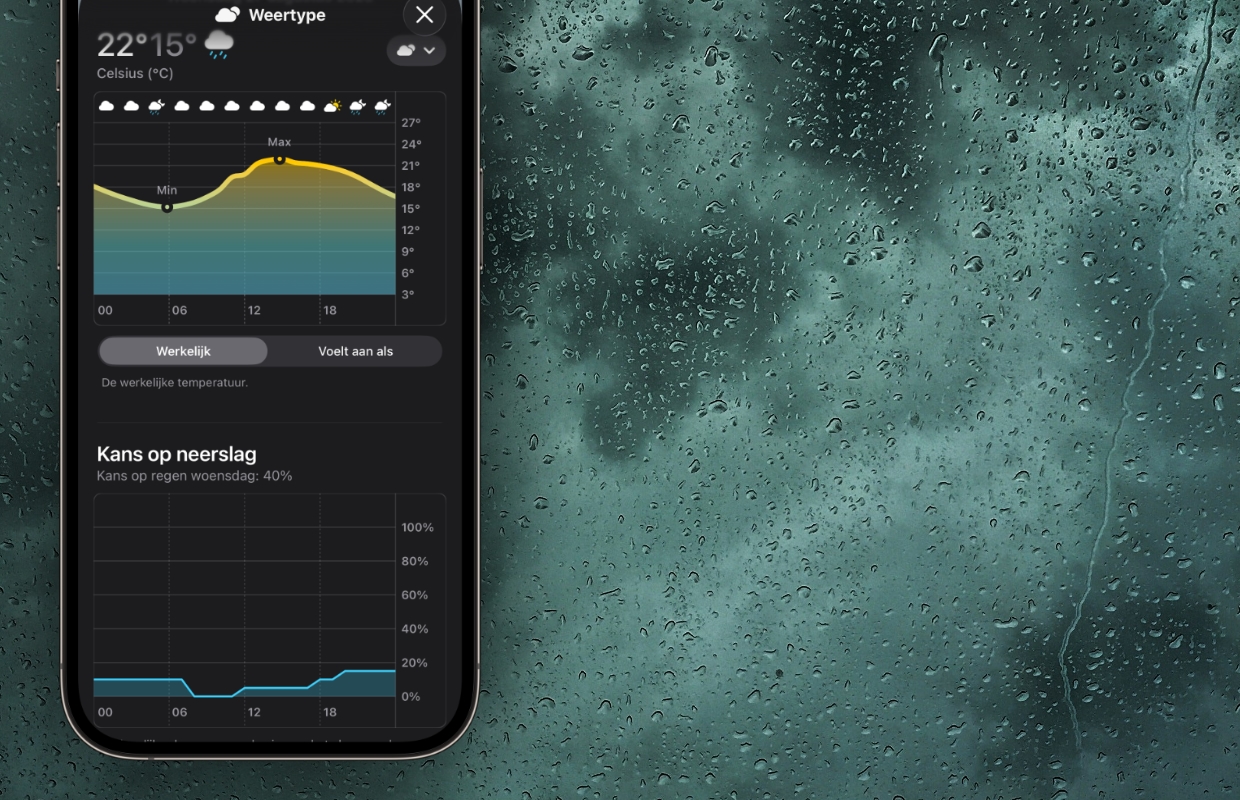Do you regularly use the weather app on the iPhone and iPad? Then there is a good chance that you will see wrong predictions. That’s how it comes.
Apple’s weather app is wrong
For many users in the Netherlands and Belgium, the weather app is perhaps one of the most used applications on the iPhone and iPad. Certainly in the winter months it is useful to know what the weather will do in the coming period. The same applies in summer time, especially if the weather is changeable with unexpected rain showers. The weather app on the iPhone and iPad comes in handy in that case, because it is standard on every Apple device.
Do you regularly use the weather app on the iPhone and iPad? In that case you are probably (unpleasant) surprised, because the weather forecasts in the application are regularly incorrect. This mainly applies to the predictions over a longer period of time, where both the precipitation and the clouds are incorrect. This now leads to annoyances for users in the App Store.

So it comes
Good weather forecasts are important in countries such as the Netherlands and Belgium, especially in changeable weather. Unfortunately, the predictions in the weather app on the iPhone and iPad are not regularly correct. This has to do with the data that Apple uses in the application. Apple took over Dark Sky in 2020, all functions of this weather service have been added to the weather app. This service has since been renamed Apple Weatherkit API.
To make weather forecasts, the map of the Netherlands (and the rest of the world) is divided into rasters by Apple Weatherkit API. These are relatively large, which is detrimental to a small country like the Netherlands. If the weather is predicted for a larger area, small local differences are often not included in detail. As a result, the predicted temperature in the weather app on the iPhone and iPad regularly does not match reality.
These local differences are caused by the presence of, for example, a forest, a city and even the sea. This is also called a microclimate, where a local climate differs from the climate in a larger area. The weather app on the iPhone and iPad takes this into account in a (much) lesser extent, so that the weather forecasts are regularly incorrect. For a small country like the Netherlands, the map of Apple’s Weer-app is divided in too large grids, because the local differences are sometimes very large here.

More about the weather app
The predictions for the precipitation are also rarely correctly indicated at the local level in the weather app on the iPhone and iPad. The precipitation is predicted for a relatively large area, so that it is often uncertain where it falls in changeable weather. Moreover, the data in the weather app of Apple is not continuously updated, that happens several times a day. Nothing is as changeable as the weather, so the data you see are almost always outdated.
Do you want to avoid a rain shower on your next cycling or walking tour? In that case it is advisable to use a more precise application, such as rain alarm or rain radar. These apps have more accurate data for the Netherlands and Belgium, with which you can see correct predictions more often. Do you want to keep using Apple’s weather app? Then look especially at the expectations for the next two days, after that it remains difficult to predictable.

Download the iPhoned app
